Table of contents:
Key Takeaways:
- Windows offers two built-in options for screen recording: Snipping Tool and Game Bar.
- In addition to native tools, third-party options like Riverside and browser extensions like Loom also make screen recording accessible for a variety of tasks.
Have you needed to show someone exactly what’s happening on your screen but found yourself fumbling with screenshots or trying to explain step-by-step over a call?
It’s frustrating and inefficient, especially when you’re working on a project, troubleshooting an issue, or delivering a tutorial. This is where screen recording comes in handy. And there are lots of great tools for doing this quickly and easily on Windows.
Read on to discover clear, exactly how to screen in Windows 10 and 11.
How to screen record on Windows 10 and 11
Screen recording on Windows 11 is simple with built-in tools like the Snipping Tool and Xbox Game Bar, which work just as smoothly on Windows 10. But if you prefer recording online, or want more flexibility then tools like Riverside function the same on both versions.
Let’s run through how to use each one.
How to screen record on Windows with the Snipping tool
The Snipping Tool has been a long-time favorite for capturing screenshots, but in Windows 11, it got a major upgrade: it can now record video. This built-in tool is perfect for quick, no-fuss screen recordings, like quick demos, tutorials, or troubleshooting.
Here’s how to record your Windows 11 screen using the Snipping Tool:
Step 1: Search for the “Snipping Tool” in the Start menu and click to open it. If you're using an older version of Windows 11, ensure your app is updated through the Microsoft Store to access the recording button. To do this, open the Microsoft Store, search for “Snipping Tool,” and click “Update” if an update is available.

Step 2: In the top toolbar of the Snipping Tool, you’ll notice a video camera icon. Click this icon to switch to screen recording mode.
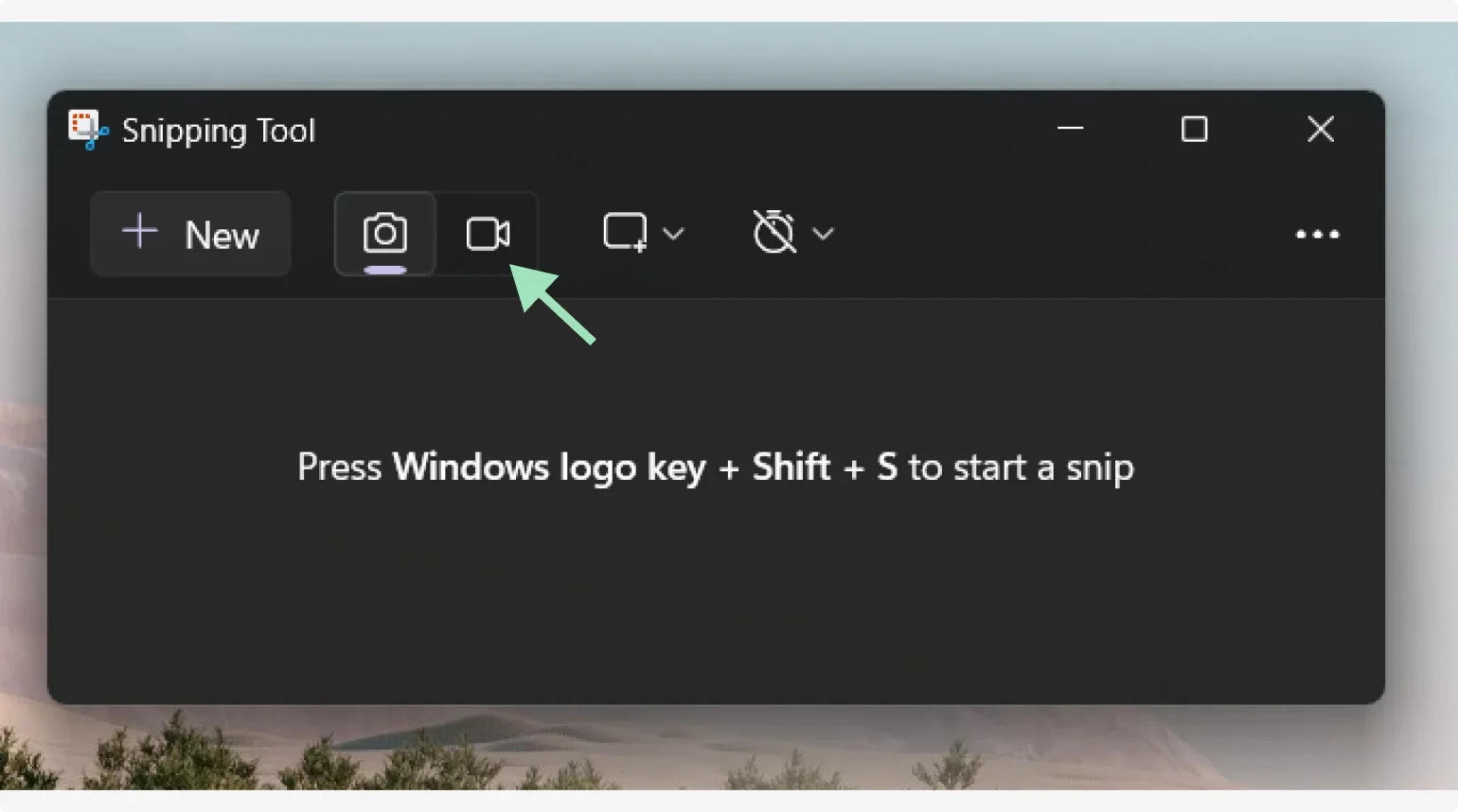
Step 3: Click “New” on the top menu bar. Your screen will dim slightly, allowing you to select the area you want to record.
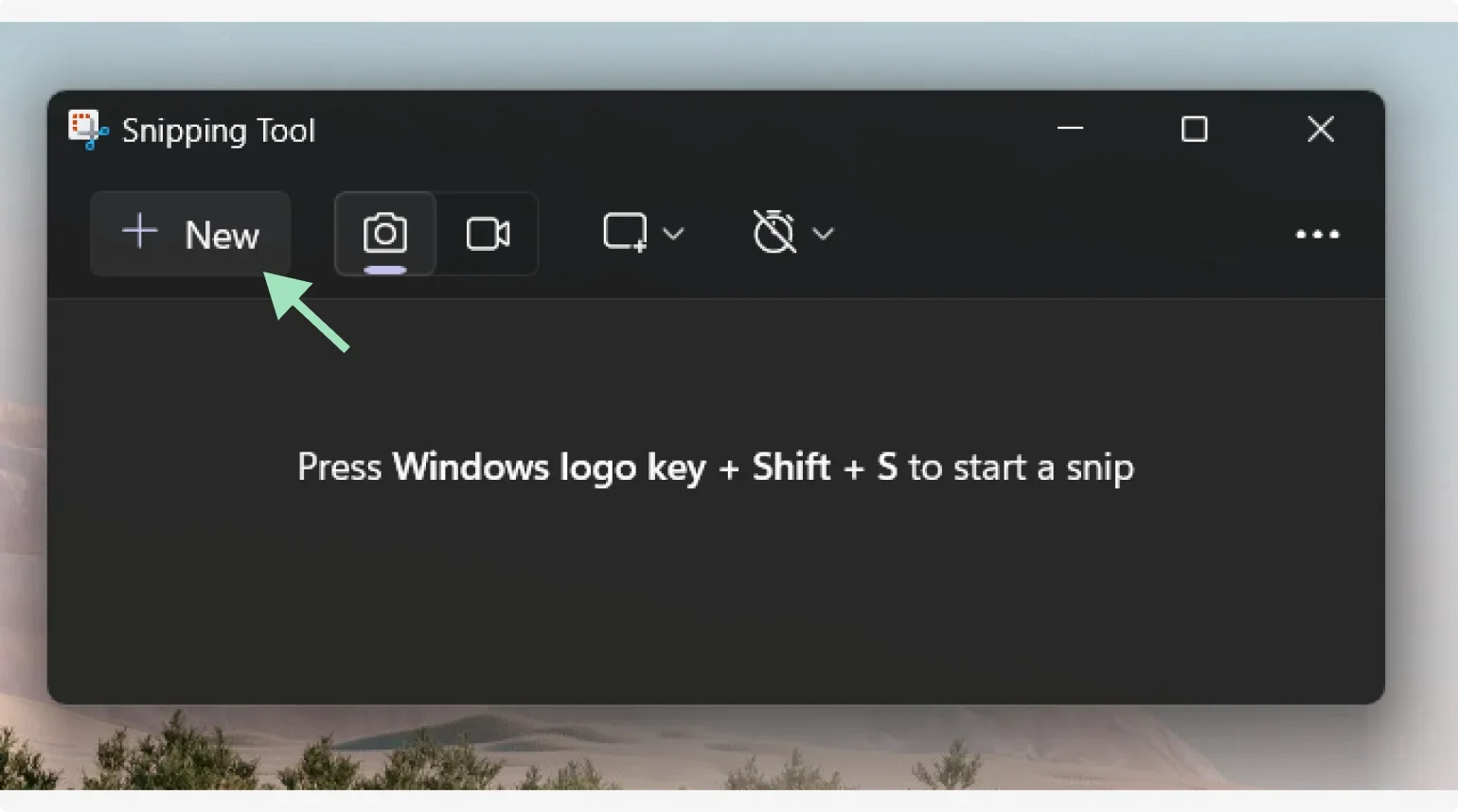
Step 4: To record part of your screen, use your mouse to draw a rectangle around the area you'd like to capture. This is helpful when you want to focus on a specific window or section of your desktop.
If you'd prefer to record the entire screen, simply drag the rectangle across the full screen area.
Step 5: Once you’ve selected your recording area, click “Start.” The Snipping Tool will give you a 3-second countdown before the recording begins, recording everything that happens within the selected area.
Step 6: When you’ve finished your session, click “Stop recording” in the toolbar. A preview of your video will open, allowing you to review the footage.
Step 7: Click “Save,” choose your file location, and save the recording as an MP4 file.
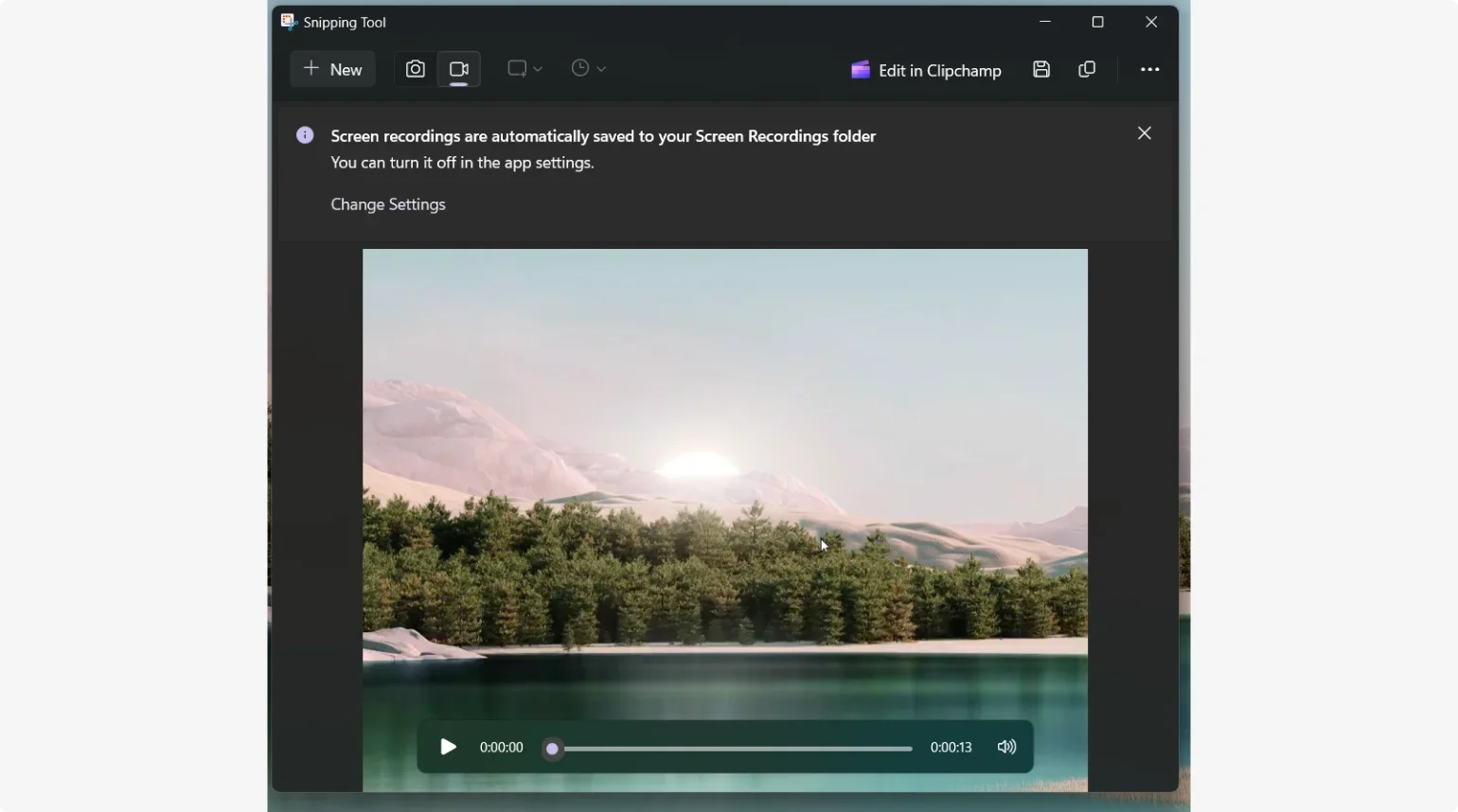
How to screen record with Xbox Game Bar
The Xbox Game Bar is a built-in Windows 10 and 11 feature primarily designed for gaming, but it’s also handy for recording your screen. Whether you're capturing gameplay, tutorials, or app walkthroughs, it's a quick and simple tool that comes pre-installed.
Here’s how to screen capture with the Xbox Game Bar:
Step 1: Press “Windows + G” on your keyboard. This will bring up the Game Bar overlay, which includes various tools like performance monitoring and capture options. Like this:
.webp)
Note: If the Game Bar doesn’t open, go to Settings > Gaming > Game Bar. Click on the toggle bar to enable.
Step 2: Once the Game Bar is open, click “Capture” (it looks like a camera). A small pop up will appear on your top left.
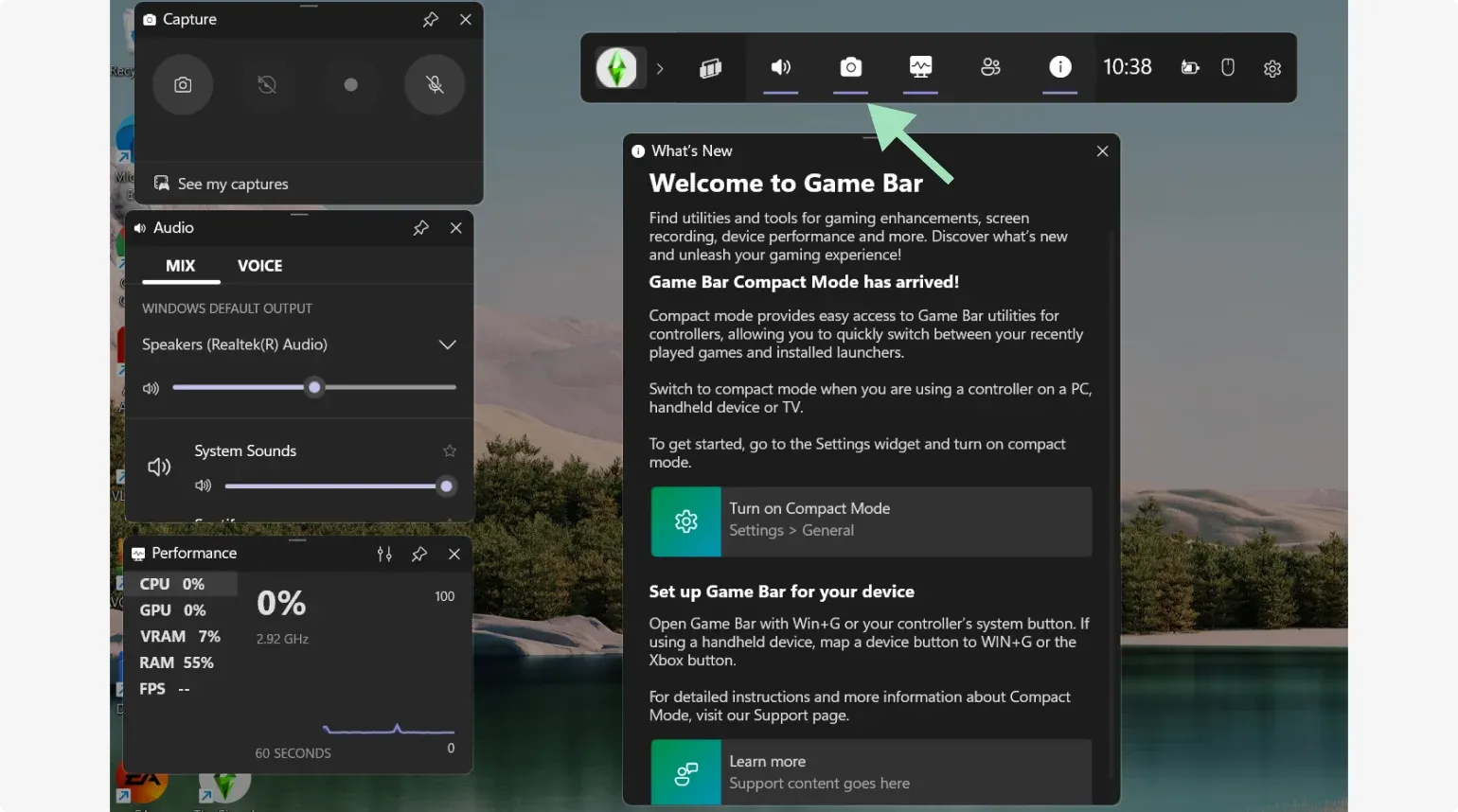
You can also use the keyboard shortcut “Windows + Alt + R” to start recording immediately.
If you want to record audio alongside the video, make sure to enable the microphone icon in this popup.
Step 3: Click the circle recording button to start recording your Windows screen.
Note: The application you want to record from must be open.
Before you start, you could also adjust your recording settings (like video quality) by accessing Settings in the Game Bar.
Under Game DVR settings, you can change recording preferences such as video resolution and frame rate.
Step 4: When you’re done, click “Stop” (a square inside a circle) on the Game Bar or use the Windows + Alt + R shortcut again. Your recorded video will be saved automatically.
Step 5: To locate your recording, open the Game Bar and click “Gallery.” Or, navigate to This PC > Videos > Captures, where your recording is saved in MP4 format.
How to screen record on Windows online
If you're looking for a reliable way to screen record online, Riverside is an excellent option. This robust platform lets you capture high-quality video and audio directly from your browser without downloading any software.
We have a free online screen recorder where you can follow the prompts, and easily capture your Windows screen. But, if you want to capture your screen, audio, and video with separate tracks for each then it's better to record in our actual online software.
Here's how:
Step 1: Visit Riverside and create an account or log in if you already have one.
Step 2: Select which studio you want to record in, or create a new one. You can do this by clicking on the studio button in the left panel, and then selecting “+New studio”.
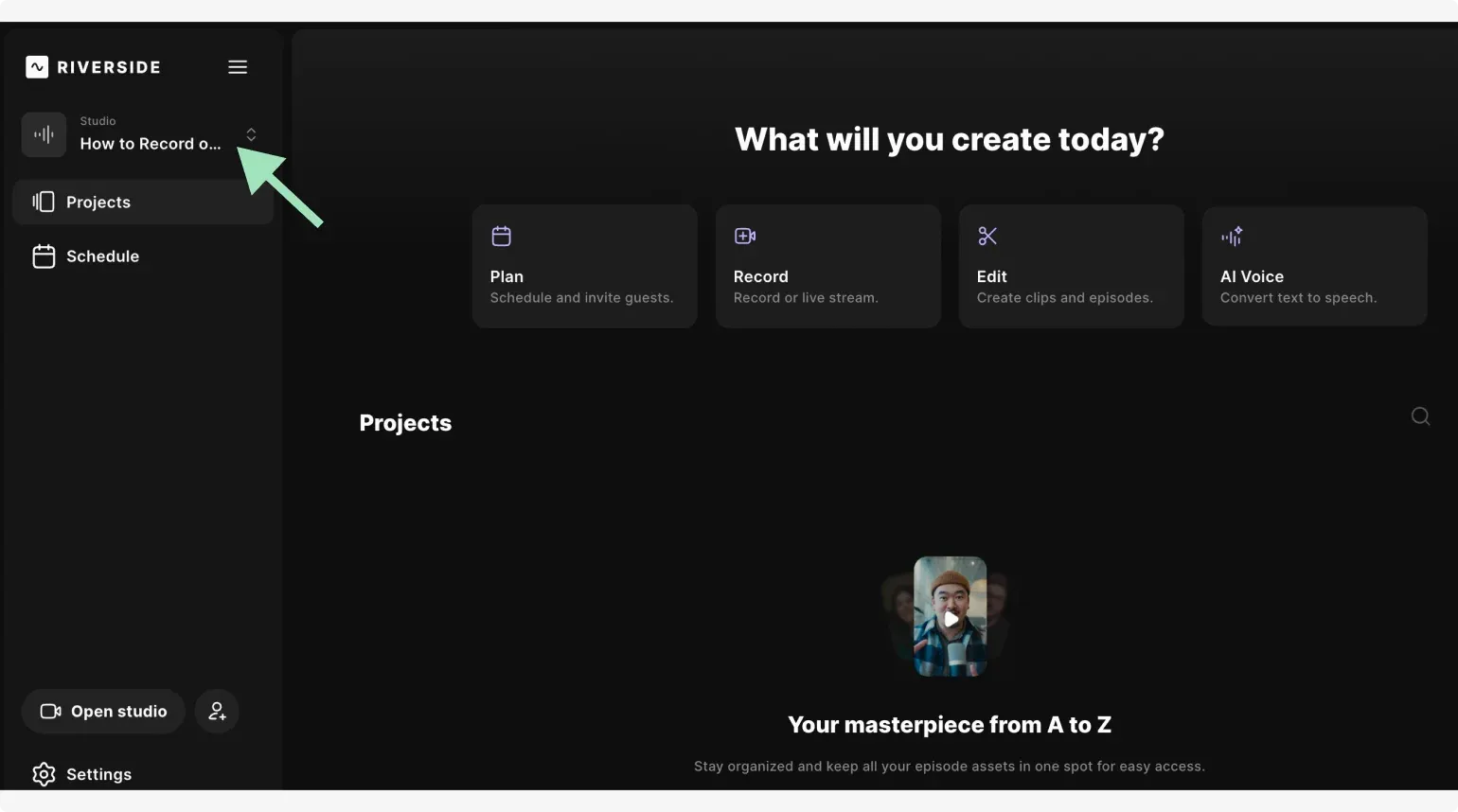
Once inside, click “Record” and follow the prompts to start a new recording session.

Step 3: In the studio, click “Share” > “Screen” from the sub-menu.
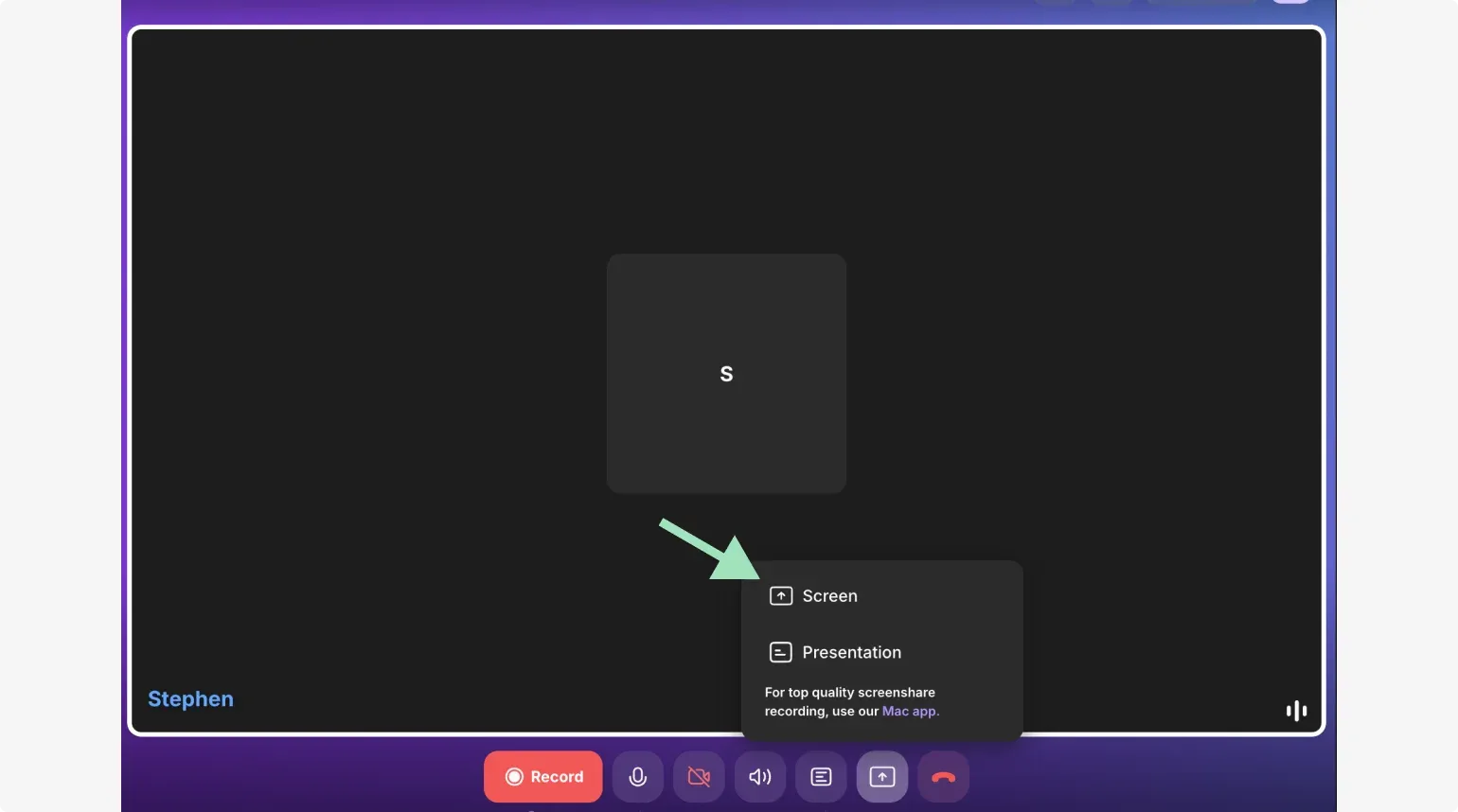
Step 4: From the displayed dialog box, select the specific window, tab, or application you want to record with Riverside. Click “Share.”
Note: To capture audio, make sure you select “Also share tab audio”. You can only do this for Chrome tab shares.
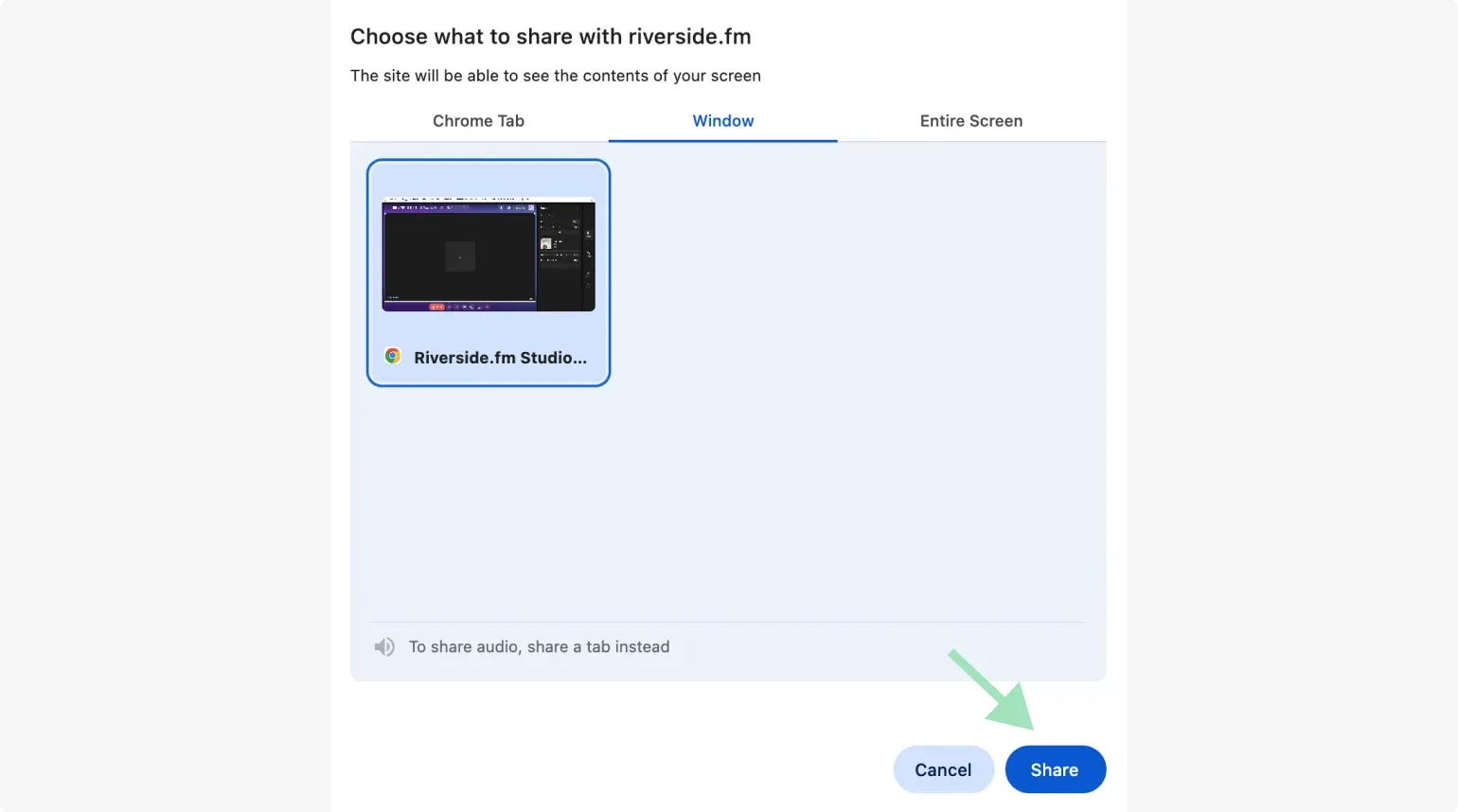
Step 5: Hover your cursor over the “Record” icon and click “Start recording” to start the recording session.
.webp)
Step 6: Once you're done, click “Stop.” The recording will be automatically uploaded to your Studio dashboard.
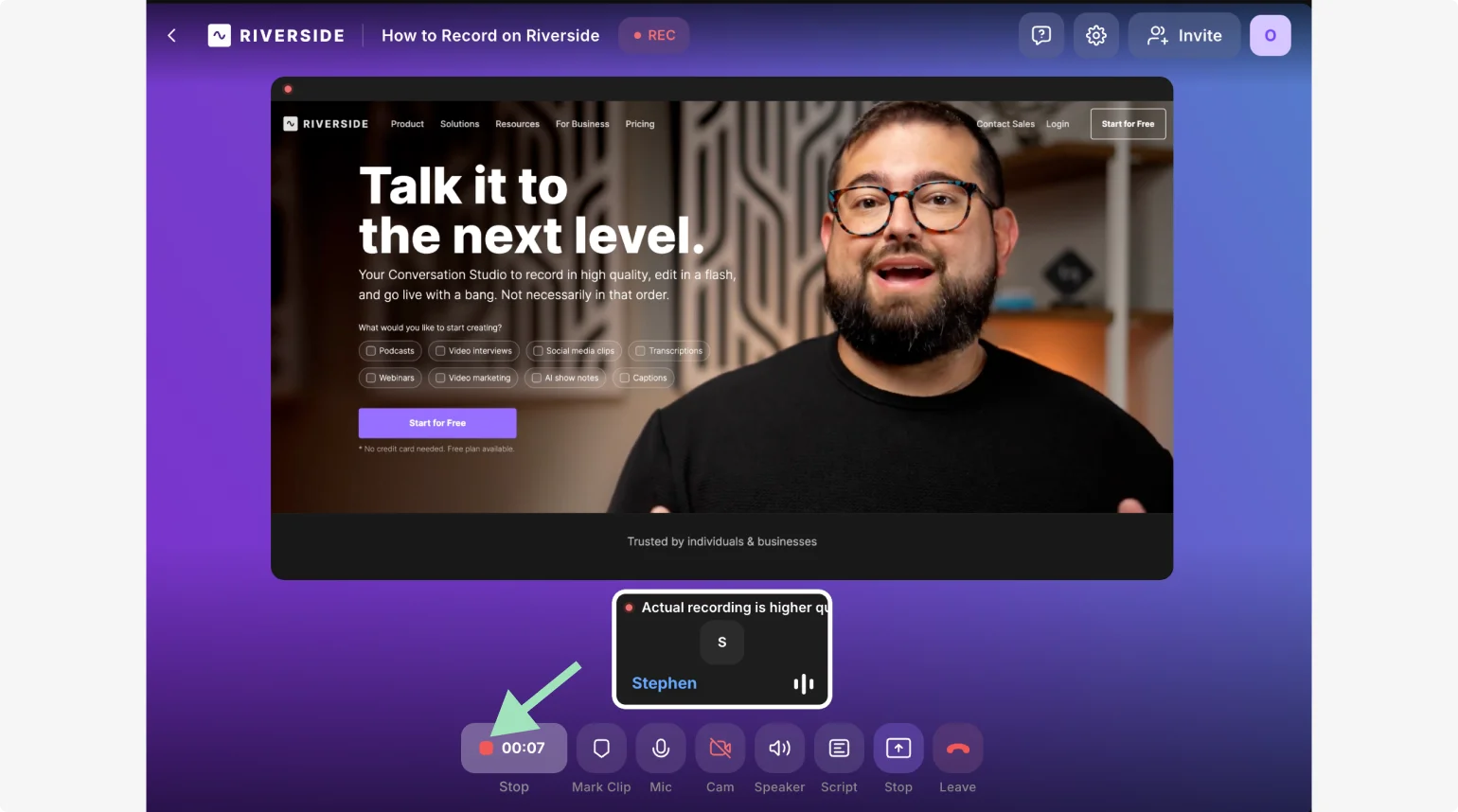
Step 7: After you click “Stop,” a popup will appear with a link to view your recording.
Click “View Recording” to access the file. You can download the recorded file in HD, or use Riverside's advanced video editing toolkit to edit your Windows screen recordings.
Why choose Riverside over a built-in Windows recording app?
For starters, you’ll get sharper, more professional-looking videos compared to what’s typically possible with native tools. Plus, you can record directly from your webcam, which makes it easy to capture yourself or others on video.
What's more, Riverside is perfect for group sessions, even if everyone’s in different places. And if you want to do more than just basic trimming, it gives you more control over editing your content.
If you’re creating a tutorial with screen recording then Riverside is worth it because you can:
- Get automatic AI transcriptions and summaries of your recordings.
- Download separate video, audio and screen recording tracks.
- Customize your recordings with captions, layouts, branding and more.
How to screen record on Windows with an extension
If you prefer to avoid standalone apps, browser extensions offer a quick and easy way to screen record on Windows. Here are some popular options:
- Loom
- Scribe
- ClickUp
- ScreenPal
- Droplr
- Wistia Soapbox
For example, follow these steps to record your screen with the Loom extension:
Step 1: Go to the Chrome Web Store, search for "Loom," and click "Add to Chrome" to install the extension.
Step 2: Click the Loom icon in your browser toolbar and sign in or create an account.
Step 3: Click the Loom icon and select the recording area:
- "Full Screen"
- "Window"
- "Browser Tab"
- Camera only
You can also switch your mic and camera on and off as desired.
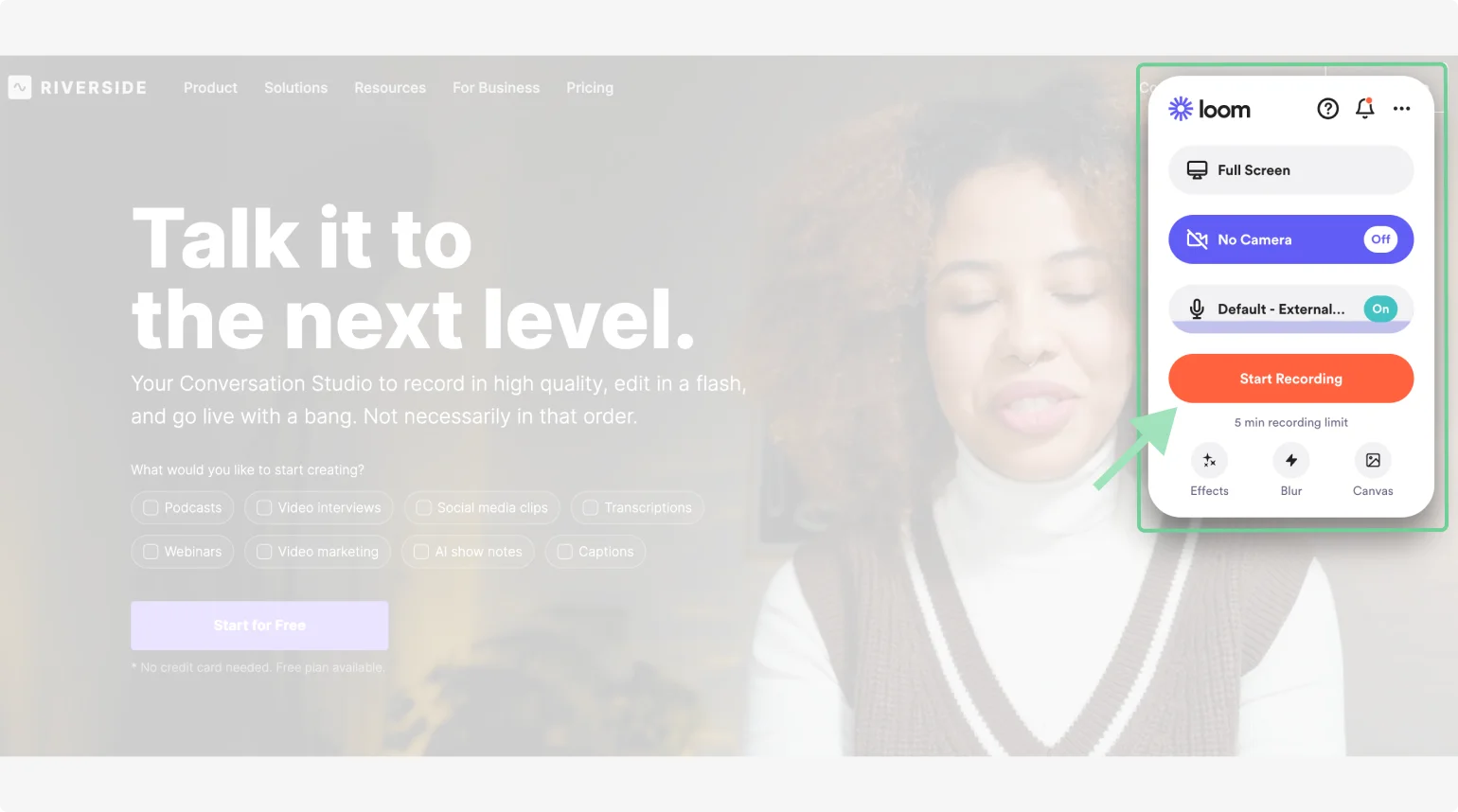
Step 4: Click "Start Recording" to begin capturing your screen.
Step 5: Use the Loom control panel to "Pause" or "Stop Recording." Click "Stop Recording" to finish.
.webp)
Step 6: Your recording will open in a new tab. Trim or annotate it, then share via a link or download as needed.
Record your Windows screen with confidence
Screen recording on a Windows PC is easy and accessible, thanks to built-in tools like the Snipping Tool and Xbox Game Bar. Each option has its own strengths, so pick the one that suits your needs, whether it's for tutorials, gameplay, or troubleshooting.
Once you're familiar with the tools, start recording confidently. Experiment with different settings to find what works best, keep your videos clear and focused, and always adjust your quality settings for the best results.
FAQs on how to screen record in Windows
Does Windows 10 allow screen recording?
Yes, Windows 10 comes with a built-in screen recorder called Xbox Game Bar and a Snipping Tool. Just press Windows + G to open the Game Bar, and click “Record” (or use Windows + Alt + R for a quick start/stop). Alternatively, you can search for the Snipping Tool from the Start menu and start recording your screen.
What is the best free screen recording software for Windows?
There are several solid, free screen recording tools out there, each with unique features depending on what you need. Some of the best screen recorders with facecam are:
- Riverside: Riverside is an online recording and editing studio that includes high-quality screen recording. . Its simple interface makes it ideal for presentations and webinars.
- OBS Studio: This open-source tool offers customizable recording and streaming with multiple scene setups and no time limits for full control.
- ShareX: Another open-source option, ShareX supports various capture modes like full-screen and window recording. Its built-in editing tools make it great for creating tutorials.
How do I edit or trim screen recordings made on Windows?
Editing screen recordings made on Windows can be done easily using the built-in Photos app:
- Right-click the video and select “Open with Photos.”
- Click “Edit & Create” in the top-right corner, and choose options like “Trim” to cut parts of the video.
- Once edited, click “Save a copy” to save your trimmed video.
Can I schedule screen recordings on Windows?
No. Windows doesn't have a native feature for scheduling screen recordings.














.webp)
%20(1).webp)



.png)


